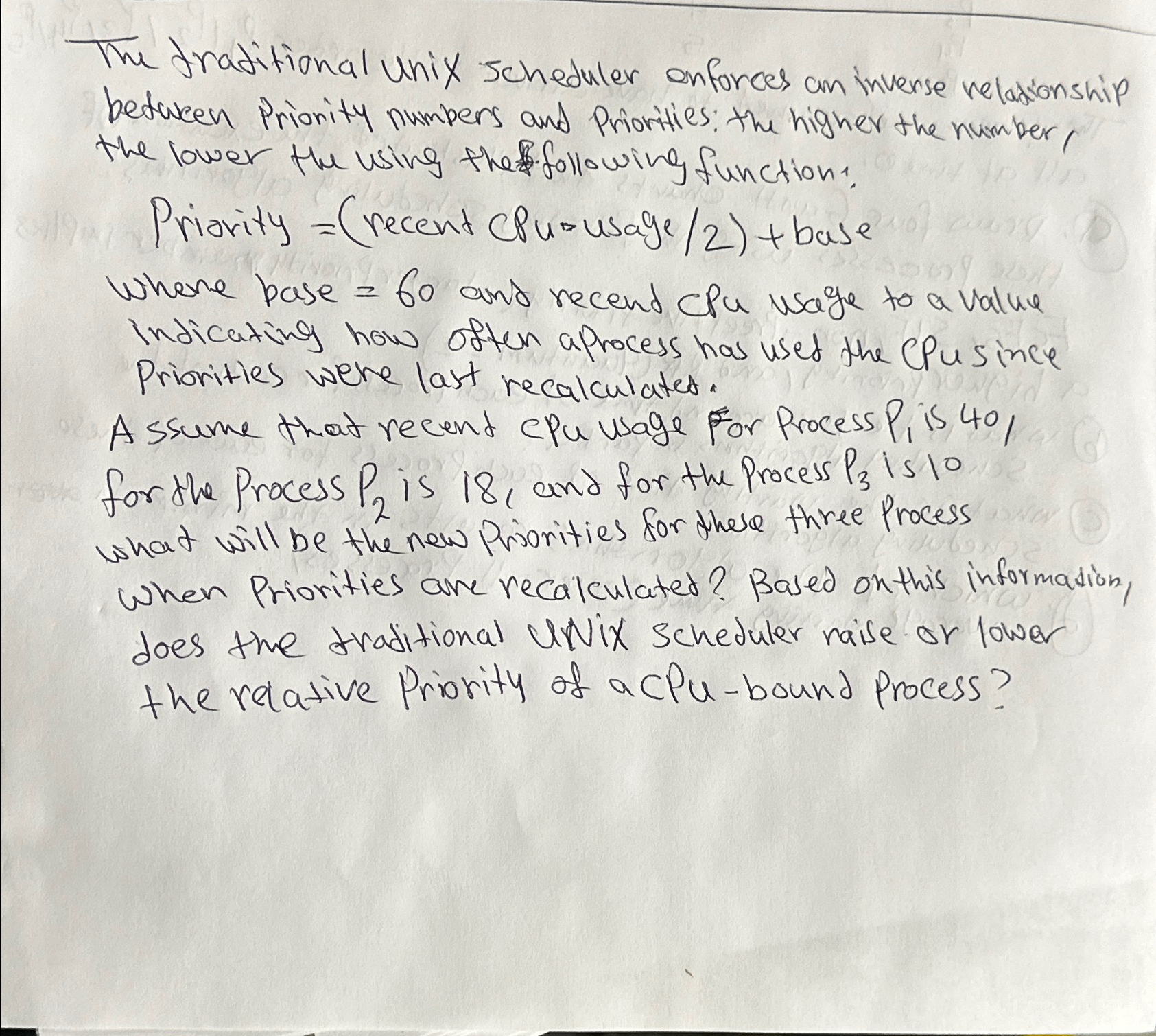Answered step by step
Verified Expert Solution
Question
1 Approved Answer
The draditional unix scheduler onforces an inverse veladionship between Prionity numbers and Priorities: the higher the number, the lower the using the following function. Priority
The draditional unix scheduler onforces an inverse veladionship between Prionity numbers and Priorities: the higher the number, the lower the using the following function.
Priority recent CPuusage base
where base and recend CPu usage to a value indicating how often aprocess has used the CPu since priorities were last recalculated.
A ssume that recend cPu usage for process is for the Process is and for the Process is what will be the new prionities for these three Process when Priorities are recalculated? Based on this information, does the traditional UNix scheduler raise or lower the relative Priority of a CPubound Process?

Step by Step Solution
There are 3 Steps involved in it
Step: 1

Get Instant Access to Expert-Tailored Solutions
See step-by-step solutions with expert insights and AI powered tools for academic success
Step: 2

Step: 3

Ace Your Homework with AI
Get the answers you need in no time with our AI-driven, step-by-step assistance
Get Started


